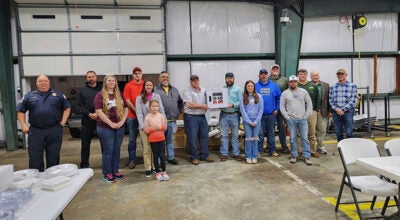Reproduction in mosses
Published 2:22 pm Friday, February 5, 2021

- Apple Moss
|
Getting your Trinity Audio player ready...
|
By Helen Hamilton
Most plants actually do it twice — non-sexual (fragments, runners, rhizomes) and sexual (eggs and sperm). Most mosses can start new plants from fragments broken off leaves of stems. Many make roundish bodies called gemmae at the ends of stems of leaves that carry the same genetic information as the parent and will grow into a mature plant if relatively undisturbed.
I am always amazed when I find yet another plant or animal that has sex essentially the same way we do — swimming sperm and stationary egg. Throughout the living world there are many variations on this procedure. Some bacteria form conjugation tubes between two bacteria through which they exchange genetic material. Many single-celled organisms do the same.
The sexual phase involves stationary eggs and swimming sperm, which act in the same way as in humans, whales and dogs. The only difference is the method of transport. Most animals use a structure to transfer the sperm from male to female, but the medium all living things use to carry sperm to eggs is water.
The green leafy moss body, most familiar on tree trunks, in sidewalk cracks, on bare spots in lawns, is either male or female. That means all parts of the plant have only one set of chromosomes in all the cells. So they must have developed from sperm or eggs that have only half the chromosomes of the body cells.
The male moss plant produces sperm at the stem tip that must swim through a tiny amount of water to reach a female plant with egg cells at the top of the stem. This is the sexual part of moss reproduction. Biologists have actually photographed these swimming moss sperm!
From the moss fertilized egg, a stalk with a rounded or cylindrical capsule arises. Inside, the double set of chromosomes that came from the sperm and egg divides to form spores that each have only one set of chromosomes. Spores are very tiny bodies, averaging only 50 microns (0.05 millimeter) in diameter. Essentially invisible to us, they travel lightly through air or on animal bodies, or shoes of walkers.
When spores find a moist habitat, they germinate to form a minute green thread that closely resembles aquatic plants like green algae, often seen in quiet bodies of water as slimy threads. From these green strands of mosses a leafy stem will grow as the familiar moss body that is either male or female.
Mosses, ferns and some algae reproduce by this method of alternating their sexual and non-sexual generations. Many and varied are the ways these plants have their sex!
For more information about native plants, visit www.vnps.org.




